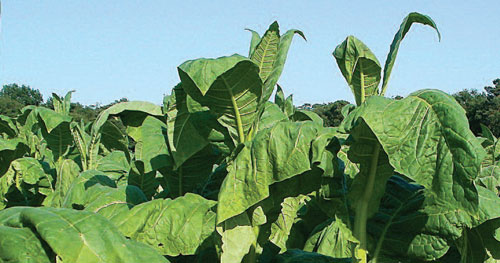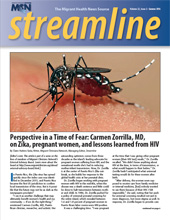Long-term neurobiologic effects on migrant tobacco farmworkers

[Editor’s Note: This article reviews a recent article from the Journal of Occupational and Environmental Medicine.]
Citation: Laurienti PJ, Burdette JH, Talton J, et al. Brain Anatomy in Latino Farmworkers Exposed to Pesticides and Nicotine. J Occup Environ Med. 2016;58(5):436-43. DOI:10.1097/JOM.0000000000000712.
A new study compares the brain activity and the nicotine and pesticide exposure levels of 48 Latino farmworkers working with tobacco crops to 26 non-farmworker Latinos in North Carolina to determine whether cholinesterase inhibiting (ChEI) pesticide and nicotine exposures result in neurobiologic effects. The study found that nicotine exposure was associated with neuroanatomical differences between Latino farmworkers and non-farmworkers. The subjects underwent both brain magnetic resonance imaging (MRI) scans and voxel-based morphometry (VBM) to determine gray matter signal differences, as well as urine tests to determine levels of cotinine (a nicotine metabolite), and blood tests to ascertain cholinesterase activity. While modulated VBM testing did not show significant findings, unmodulated VBM testing demonstrated that farmworkers had increased gray matter signal in the putamen and cerebellum, while non-farmworkers had increased gray matter signals in the cortex and the right temporal lobe. When taking cholinesterase activity into account, the researchers did not uncover a statistically significant difference in brain anatomy. Urine cotinine levels, however, revealed higher gray matter signals in some regions of the brain in farmworkers, regardless of smoking history, which suggests that farmworkers’ nicotine exposure in the tobacco fields resulted in reduced iron accumulation in the basal ganglia and cerebellum. Additionally, changes in gray matter in the medial and lateral frontal lobe areas show increased iron or atrophy in farmworkers.
The article also reviewed the current limited understanding of long-term effects of exposure to nicotine and ChEI pesticides, particularly the low to moderate levels of exposure experienced by migrant tobacco farmworkers. Although little is known about farmworkers who are exposed to nicotine in the fields, the authors review the extensive literature on the brain effects of nicotine on smokers, where a “protective effect” from smoking that reduces one’s risk of Parkinson’s disease is offset by “substantial evidence that chronic smoking is associated with loss of brain tissue volume in multiple regions,” and in particular in the lateral and medial frontal lobes. The research regarding ChEI pesticides shows “conflicting findings,” but demonstrates that ChEI pesticides enhance the cholinergic neurotransmission of nicotinic and muscarinic pathways and is clearly linked to an increase in the risk of neurodegenerative diseases including Parkinson’s Disease — the disease for which smokers are less at risk. Based on the results of the urine cotinine analysis in the current study, the researchers concluded that “it is possible that nicotine exposure in the farmworkers may be related to reductions in brain iron deposition in the putamen and cerebellum,” which is in line with the previously demonstrated decreased risk of Parkinson’s Disease for smokers, as patients suffering from the disease demonstrate an increased brain iron accumulation.
On the lack of significant results regarding ChEI pesticide exposure, the researchers write that “although the present study did not identify a relationship between brain anatomy and blood cholinesterase, it is premature to rule out ChEI pesticide exposure as a contributing factor,” because previous exposures may have had lasting effects, cholinesterase values are highly variable over time, and other factors may affect the interaction between blood cholinesterase activity and brain anatomy, including liver function and blood cell density.
Read this article in the Summer 2016 issue of Streamline here!
Sign up for our eNewsletter to receive bimonthly news from MCN, including announcements of the next Streamline.
Return to the Streamline Summer 2016 Table of Contents.
